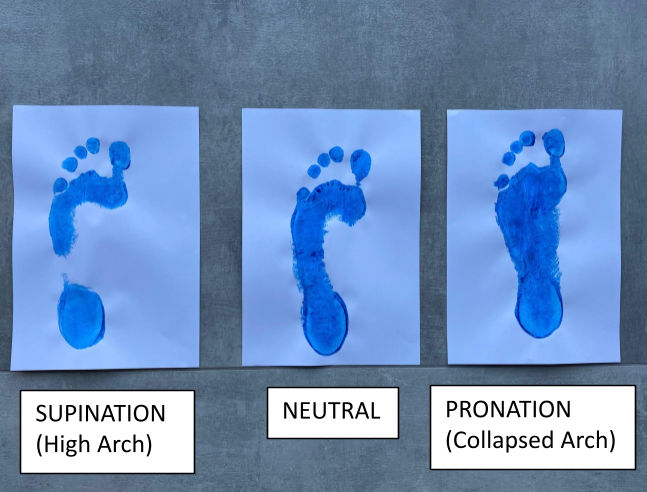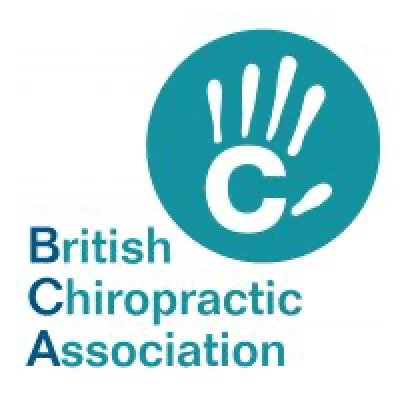Foot Posture
How can your feet affect your knees, hips and low back?
Most people walk with their own different flare. But our foot positioning and how we contact the floor as we walk, can affect our legs and back. Different walking patterns can make you more susceptible to an injury.
Some people may have a neutral walking pattern. This is where the foot hits the floor on the outer side of the heel, then slightly rolls inward to absorb shock and support your body weight. On the push off movement there is an even distribution of pressure through the front of the foot. This walking pattern is less likely to lead to any injury as there is effective shock absorption.
Other walking patterns include overpronation and supination. Overpronation is when the foot lands on the outer side of the heel, then excessively rolls inwards (pronates). This transfers the weight through the arch on the inside of the foot instead of the ball of the foot. On the push off movement the big toe does most of the work.
Supination is when the outer side of the heel strikes the floor at an increased angle with little or no inward rolling. This causes most of the shock to be absorbed through the lower leg. On the push off movement the pressure is placed though the toes on the outside of the foot.
There are certain features to look for when someone is standing still to decide whether they over pronate, supinate or have a neutral foot posture.
Foot Over pronation
- Collapsed arches
- Toes turning out
- Everted angle of the Achilles
- Bulging area over the talonavicular joint (ankle joint)
Foot Supination
- High arches
- Toes turning in
- Inverted angle of the Achilles
- Concave area over the talonavicular joint (ankle joint)
Neutral
But how does this affect our knees, hips and low back?
When there isn’t an equal distribution of pressure placed through the feet. The shock has to be absorbed elsewhere. This in turn applies more pressure on to other structures that aren’t necessarily involved in that process.
An over pronated foot posture can cause the lower leg to rotate inwards. Over time this repeated pressure can give a ‘knock knee’ appearance. This excessive rotation puts more pressure onto the ligaments of the inside of the knee and the muscles trying to support it. By over stressing these structures you can be more susceptible to a poor kneecap (patella) alignment. This can add stress on to the grove of the kneecap as the knee begins to excessively rotate inwards so do your hips. This again adds pressure on to the joints, ligaments and muscles. We want our muscles to work together as a team. Overpronation can cause some muscles to become tighter and others to become weaker.
When the hips aren’t doing their job effectively then the pelvis and low back have to take over and try to compensate for what is going on further down the leg.
With a supinated foot posture the foot becomes very rigid and inflexible. Where the arch is high this can cause the bottom of the foot to become tight and can lead to a condition called plantar fasciitis. This can be very painful.
The mechanism of stress is similar to that of over pronation, however with a supinated foot posture additional stress is placed on the outside of the knee and hip due to the outward position of the knees. More commonly known as bowlegged appearance. A key muscle that is stressed in this position is the iliotibial band (ITB). The ITB muscle runs from the knee all the way up the hip and is more likely to become tight with a supinated foot posture.
Our bodies are like clocks, if one cog is out of place or not doing what it should be, time wont tick as it should.
What to do?
- Orthotics. If the posture of the foot is not too severe it can be addressed in clinic by fitting a pair of insoles (also called orthotics). They can help with over pronation by supporting a collapsed arch. The insoles have a high arch and will absorb the shock placed by over pronating onto the inside of the foot.
- Ball rolling. Place a hard ball under your foot starting at the heel and gently roll the ball back and forward. You can start by doing this sitting and then work up to apply more pressure to eventually be standing on the ball. This is great if you supinate and have a high arch.
- Chiropractic to address where the pain is coming from. Is it coming from your feet knees hips or back?
- Early intervention. These walking patterns tend to develop in our childhood when we are first learning how to walk. If you can address the issues at an early age you are less likely to develop related injuries.
- Podiatrist. Podiatrists specialise in foot health. Sometimes if the walking pattern is severe a specialist referral may be needed.
If you have any questions please send me and email or book an appointment.
Read onto our next article by Physiotherapist Philippa ‘ Setting Goals When In Pain Or Recovering From Injuries’.


























